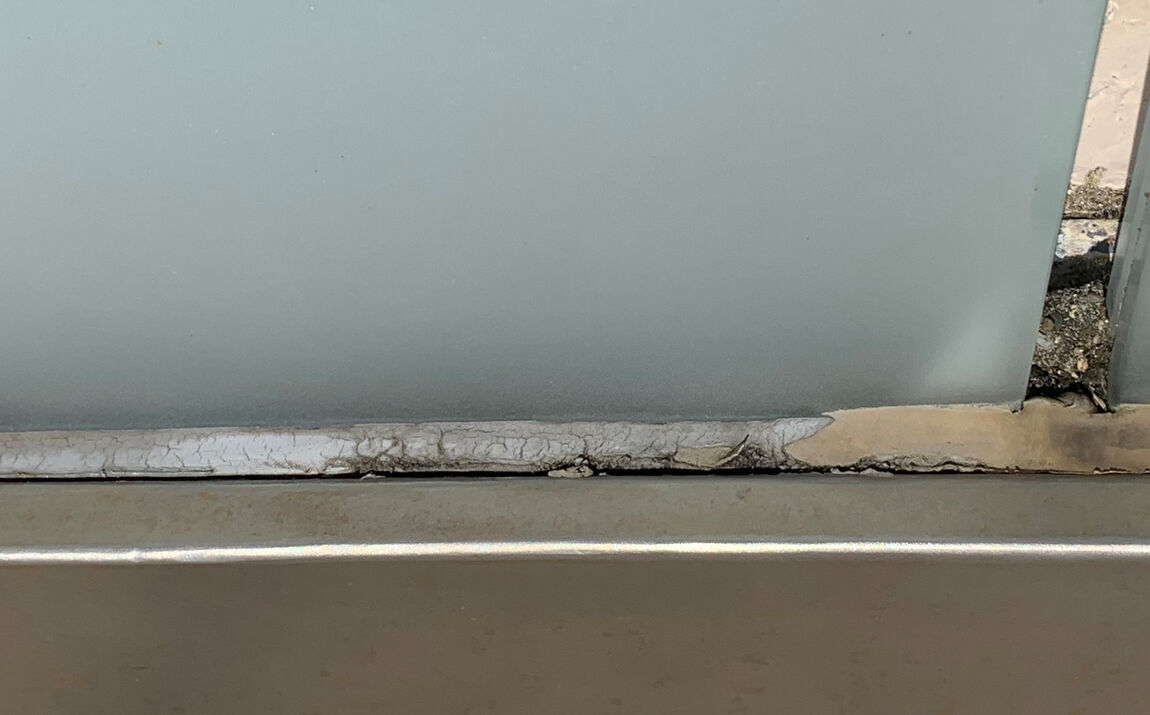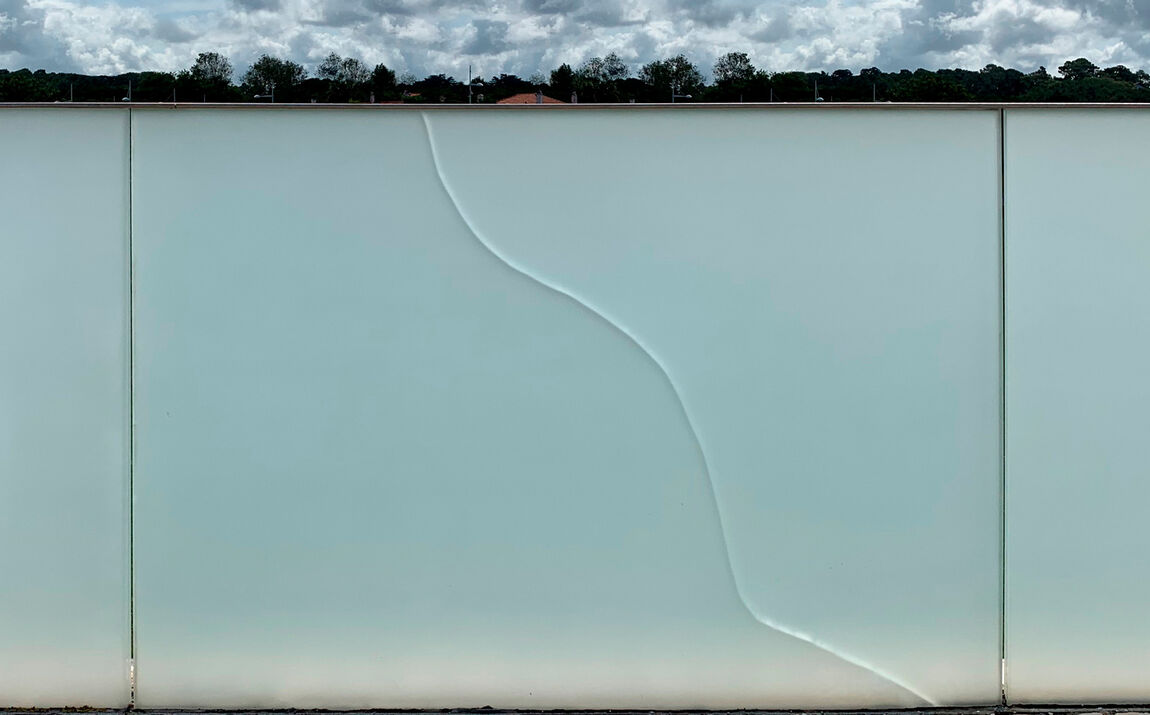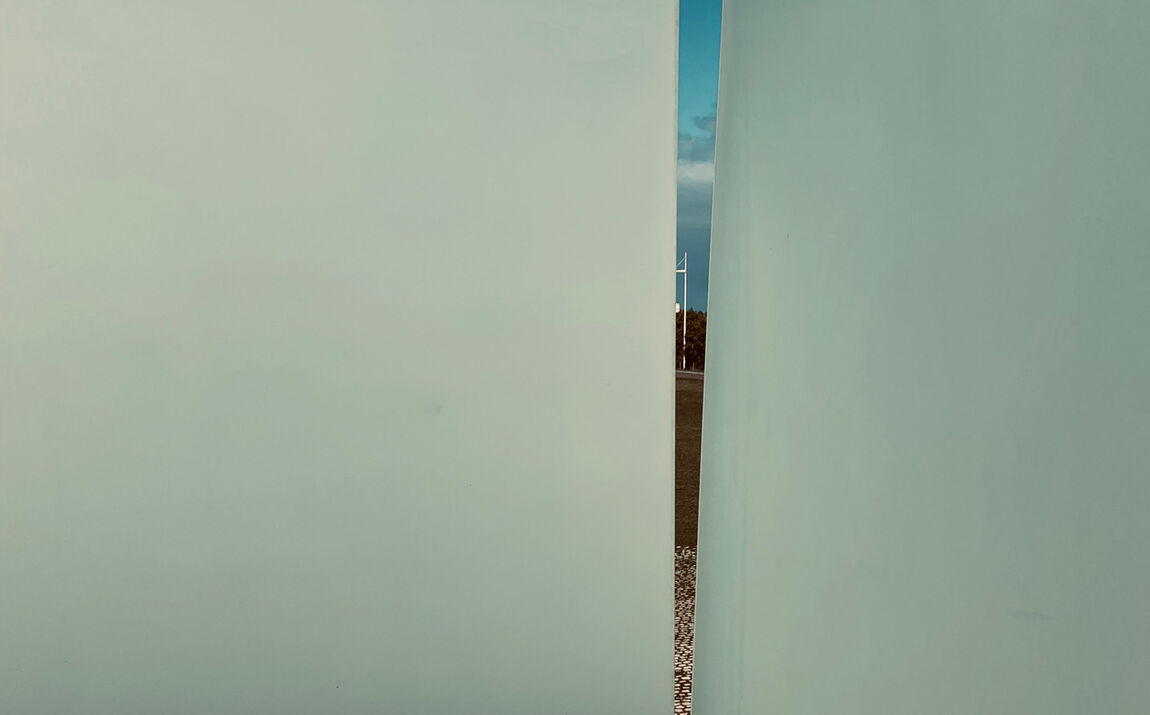NO TO CHEAP PRODUCTS
The lightness and properties of glass as a transparent building material are particularly fascinating when you can use the function as fall protection without a railing appearing visually. This is best achieved by clamping the glass linearly at the bottom edge. More and more railing U-channel manufacturers are pushing into the market with cheap products, while making absolutely sure that they are not actually the ones who bring the finished product "onto the market". There is a good reason for this: This responsibility is often deliberately left to the tradesman, because some products are simply unsuitable. A dramatic increase in the number of cases of damage related to glass U-channels is increasingly preoccupying the experts. Particularly critical are detailed solutions that reach below the sealing level and are integrated into it, especially if they have not been solved in a technically proper manner.
In order to prevent construction defects, there are five things to consider:
1. LINEAR MOUNTING
The glass is fastened exclusively at the lower edge of the glass by clamping. The glass support must use the entire clamping height and the entire clamping width evenly. In contrast, if only local wedges are installed, the entire lower edge of the glass is not used for force introduction and transmission. This results in pressure points and stress peaks as in a classic point fastening – this has nothing to do with linear mounting.
With every glass breakage, for whatever reason, the executor is responsible. The indication that the glass breakage would not have occurred if the glass had been mounted evenly is justified and cannot normally be refuted. Thus, each glass breakage is attributed to the stress peaks in the point support.
If one compares the situation with standard window glazing with four-sided linear mounting, it is clear: A glass breakage emanating from a pressure point, for example a nail in the glazing bead, is usually a warranty case. Every "normal" window has a four-sided linear mounting. Unfortunately, the system of perfect linear mounting for all-glass railing systems has not yet been widely accepted.
1. SEALING
The sealing between glass and construction is usually carried out with rubber gaskets. Over time, rubber changes its consistency and volume due to weathering, thermal expansion and UV radiation. If you try to seal a rubber profile with silicone, you cannot do this, because peroxide migrations change the materials. A tight connection of the two materials rubber and silicone is not possible in practice.
If, in comparison, one considers a standard mullion-transom construction, the glass elements are mounted there on all four sides and the seals are pressed against the glass pane with screwed clamping profiles. The screw spacings and the pressing forces are clearly specified by the system manufacturer and are manufactured in a controlled manner with a torque wrench perpendicular to the glass plane. If we turn back to the topic of glass railings, it is surprising that, in some systems, an attempt is made to achieve a sealing function using only pressed-in rubber profiles. Some systems even use the same rubber profile for different glass thicknesses. The result is the penetration of large quantities of water and moisture into the construction, where this goes unnoticed for a long time and often damages the entire building substance. In most cases, the water also causes premature delamination of the laminated safety glass. The standard "Glass in construction – constructive glass building" clearly stipulates that the drying of exposed LSG edges must not be impeded. Nowhere is it written that drainage holes should be provided so that penetrating water can be routed somewhere, which usually does not work in any case.
2. INCLINED POSITION
In the case of a point glass support, cavities are created between the support points, which fill with water, freezing moisture and dirt in the event of insufficient sealing. Sometimes even a breeding ground for vegetation is formed. This leads to changes in the mounting area. All-glass railings strongly resist the wind forces. These wind forces, which constantly stress the glass railing and its fastening, are often underestimated, since the glass is transparent and is not recognized as a closed panel similar to a billboard. In no case are the experiences gained from a steel bar railing – which offers no resistance to wind – transferable to a closed all-glass railing. The high forces and the long "lever" of the protruding glass railing cause the U-channel to be easily bent. Numerous tests have proven that almost all aluminium U-channel systems change their shape and thus also the glass support. Even with a one-time load on the glass, this no longer returns to its original vertical position. In the practical implementation, this inclined glass railing has nothing to do with a faulty installation as is often claimed, but is due to an unusable system.
3. SAFETY
An all-glass railing is a safety-relevant support structure. If an all-glass railing is assembled from individual components such as glass, steel parts and aluminium profiles from different suppliers, the "marketer" must be certified in accordance with DIN EN 1090 EXC 2. If a system is used with all components, only the system manufacturer must have the certification. All-glass railings need tests, approvals and much more, including a "general building authority test certificate". The execution is guaranteed by a declaration of conformity. Especially during implementation, care must be taken to ensure that the manufacturer's specifications are complied with. Safety takes precedence. Because where life and limb are concerned, the utmost care is required.
4. SEPARATION OF PERFORMANCES
The separation of performances is particularly important: If the responsibilities were not clarified before construction began, all parties involved are often sat in the same boat in the event of damage. A specialist is required who is responsible for sealing. Another is responsible for the stability and construction of the all-glass railing. A third provides the subsequent performances, such as the pavement. A fourth plans the execution and coordinates the individual trades. Once the performance limits have been clarified, responsibility is also clearly regulated. However, if the system used is a mixture of all trades, for example, if the drainage channels are integrated into the construction profile, the responsibilities are hardly separable.
CONCLUSION
The most important measure to avoid damage is early detailed planning. The most decisive quality criterion is system selection. As a rule, the system is defined by the entity that calls for tenders. Relying on the cheaper product is not always an advantage. It is also often advisable not to actually implement every constructive idea. Unfortunately, damage usually only occurs after five to ten years. As always: a reliable partner is the be-all and end-all.
COMPARISON OF THREE COMMON EXECUTION VARIANTS:
Integrated system solution – aluminium U-channel
- Seal, U-channel opening on force introduction
- Mixed construction with high damage potential
Conventional solution – steel construction
- with uniform glass support
- free glass edges, with drilled holes in the glass
- Separation of performances
Modular solution – prefabricated components
- optimal glass support by bonding
- protected glass edges, fully encapsulated
- Separation of performances
Author: Glas Marte Managing Director Bernhard Feigl, master of the State Guild and master glazier




